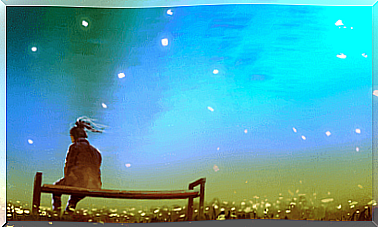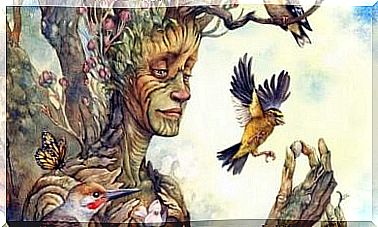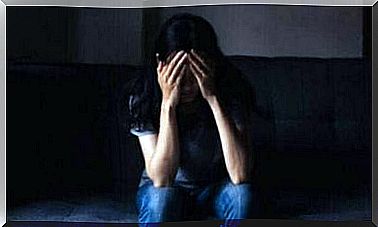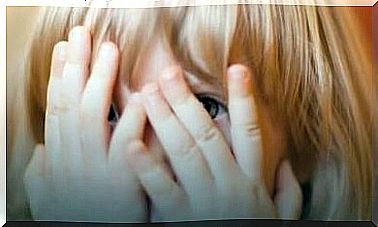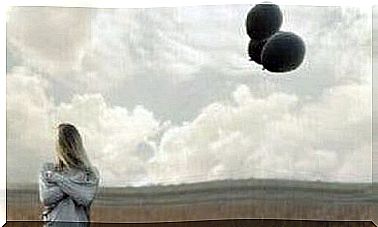The Bar: The Absurdity Of Human Nature
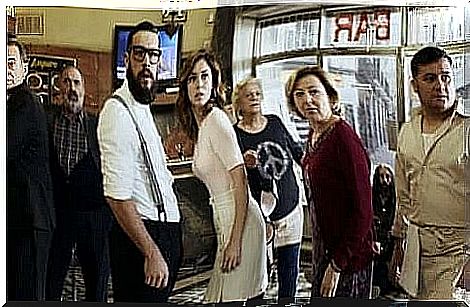
The last two films from the filmmaker Álex de la Iglesia from Bilbao premiered at about the same time. The Bar and Perfect Strangers premiered in 2017, although the two films had a completely different impact. While the former made a modest profit, the latter became the director’s most lucrative film. Perfect Strangers was perhaps more appealing to audiences than The Bar , which is a more bizarre film.
The series of crazy events is fascinating most of the time, but also gets pretty absurd. Personally, I think The Bar is a nice, entertaining movie with quite an attractive plot. However, it can also be boring at times and is a film that does not shine among the filmmaker’s other films. It’s just more of the same.
The action in The Bar
On a typical morning, a group of people in Madrid have breakfast at the bar. Some of them know each other, while others are just random guests. Suddenly interrupted the routine of tragedy: N oen is shot and killed outside the bar. The urban chaos disappears, the city seems deserted, and this group of characters is trapped inside the bar.
The bar has an interesting plot and presents the characters well, as if they were a reflection of society. De la Iglesia manages to capture the truth behind the mask, the nature we hide behind the roles we play in society.
The Bar : A non-place
The bar we see in the movie is a bar like any other. There’s nothing special about it. It is the local bar where people in the surrounding areas have lunch every morning. Or people like Elena, who will never get there again. In the familiar, limited space, the characters bring the film to life.
Marc Augé is a French anthropologist who is credited with the term “non-place”. But what is a non-place? It is a temporary path, a place where identity does not manifest itself. Augé identifies highways, hotel rooms, planes, etc. as non-locations. These are places where people stay for a short time, places where they almost do not want to interact with others, nor build any meaningful relationships.
A non-place is the opposite of an anthropological place, the place where identity lives. Non-places are transient. They are rooms that plague today’s society. Whether a particular place is a non-place is subjective. It depends on what the particular place means to a particular person.
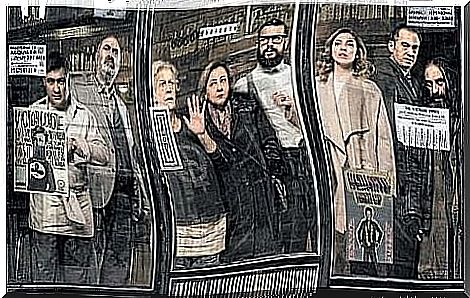
The surroundings of the bar
This bar is a non-place within the confines of a city that never stops moving. It is also a place of anonymity for many, and a shelter for others. At the bar we meet Elena. She is a young woman who just went into the bar to charge the phone. Then we have Trini, a customer who comes every day to play the slot machine.
Elena and Trini are not the only characters caught in the small room. A total of eight people are captured. Álex de la Iglesia has shown his ability to create a sense of claustrophobia in previous films. He often catches people in places where they encounter extreme situations. For example, Common Wealth or My Big Night .
Ensemble characters as a selection of society
The Bar is a good representation of modern Spain. The eight characters are different: It is a homeless person, a young but extremely insecure young woman, a middle-aged, “ordinary” looking woman with gambling problems, a young hipster, and a former policeman who was fired from the police force due to alcoholism, among others.
As the situation becomes desperate, the characters show their true colors. The Spanish philosopher Eugenio Trías spoke about these problems in his work Philosophy and Carnival. For Trías, we act according to conventions, according to the roles society itself has imposed on us. But we have several roles and do not act in the same way in all situations. We do not project the same image of ourselves all the time.
This is exactly what we appreciate most about the film. For example, we see that Elena does not behave in the same way when she talks to her friend on the phone as she does when she enters the bar. In the same way, everyone has a certain duality: the image they project and the secrets they hide from others.
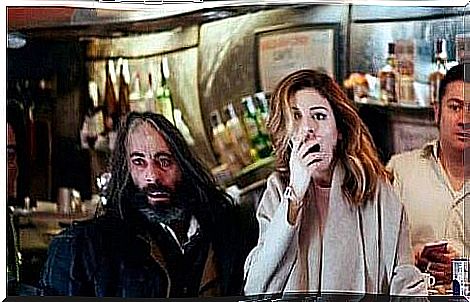
The masks fall
This masked dance is a reflection of our world, of the bars we visit frequently, and also of the modern cities where personalities take shape quickly. Interestingly, the character whose identity remains most stable is Israel, the homeless man. Above all, Israel does not seem to belong to the same world as the rest of them. He is a man who has experienced many problems, and yet never tries to deceive us.
As the situation becomes desperate, everyone fights for their individual survival. In the midst of this, the philosophy of “every man for himself” prevails, and the masks fall. This reflects the hypocrisy that surrounds our world. However, Israel does not take off a mask, or at least he does to a lesser extent. Why? Simply because Israel does not strive to satisfy anyone. He never tries to project another image of who he is.
Conclusion
Are the ones we shut out the most authentic among us? Israel is already in a desperate situation, and is already fighting every day to survive. For that reason, he is a pariah in society and therefore does not have a mask. Between the eschatological, the comic and the tragic, The Bar makes us see people at their most naked. The Bar creates a situation where survival prevails over morality and social norms. When the characters take off their masks, we see the worst facets.

